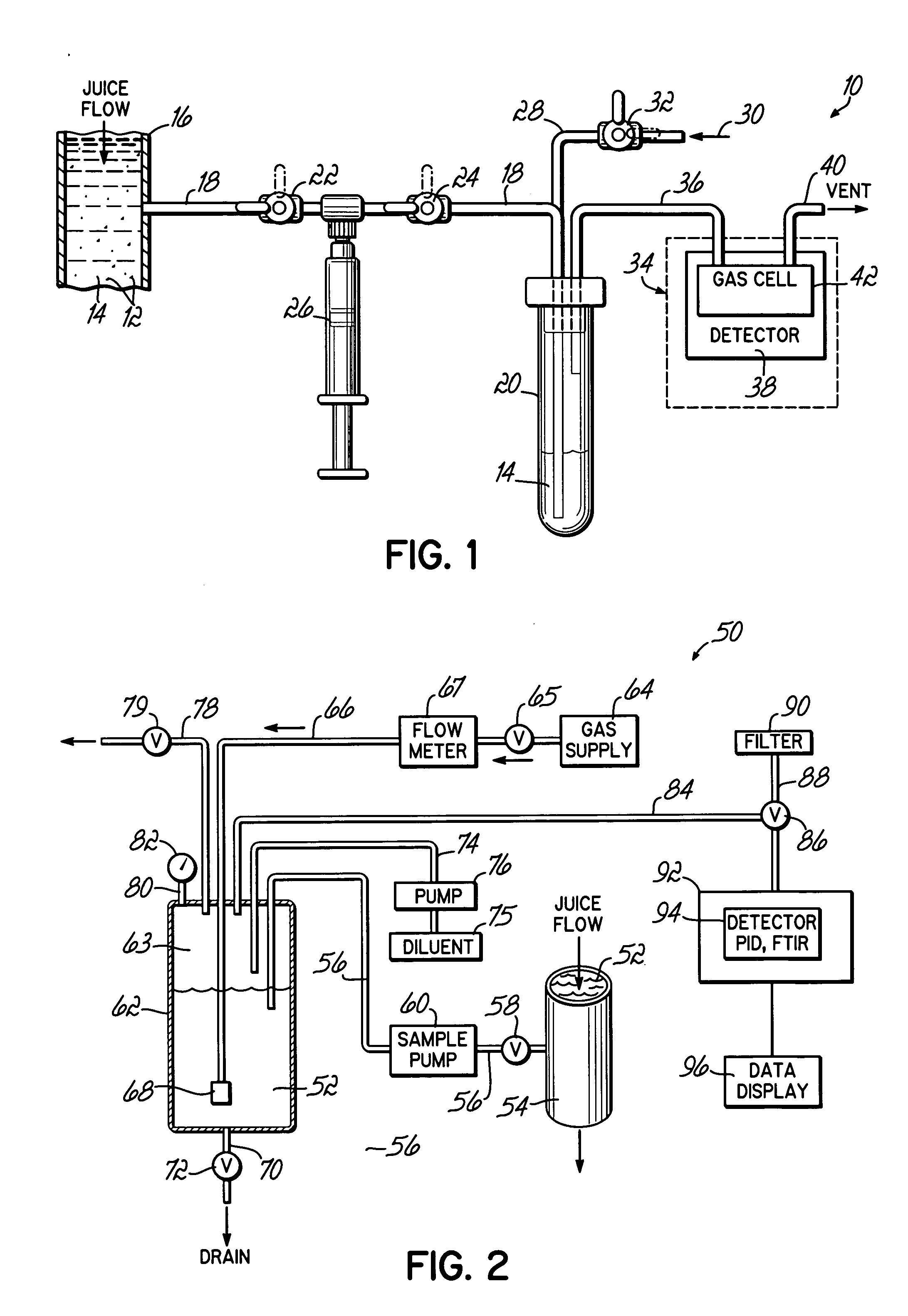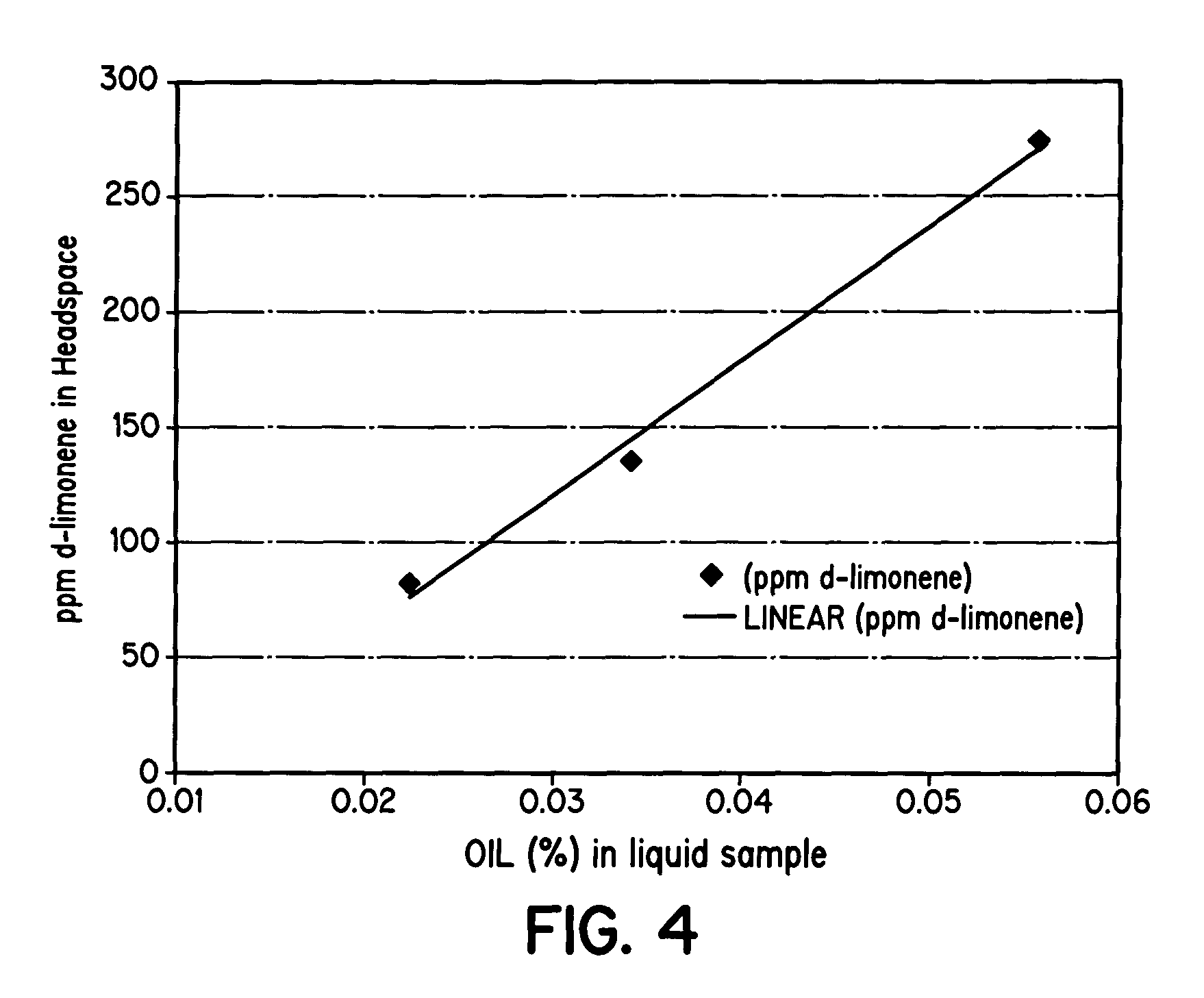Method of measuring volatile components of foods
a technology of volatile components and food, applied in the field of measuring the level of volatile components of foods, can solve the problems of limiting the application of this method, affecting the accuracy of limonene determination, and compromising user safety, so as to eliminate potential interference and related problems, and reduce the cost of measurement.
- Summary
- Abstract
- Description
- Claims
- Application Information
AI Technical Summary
Benefits of technology
Problems solved by technology
Method used
Image
Examples
Embodiment Construction
The present invention provides methods for determining levels of one or more volatile components in a food composition, such as in a food processing stream, without the accompanying weaknesses and drawbacks of previously proposed methods described in the Background of the Invention. Volatile components, and particularly essential oils, are present in natural foods, such as fruits and vegetables, leafy foods such as herbs, and the like, and generally in processed food products and by-products manufactured from natural foods. By-products, such as degradation products of foods, may also contain these essential oils. The term “food composition”, as used herein, is intended to refer to natural foods, processed foods and foods in any stage during the production of processed food products and by-products. Thus, “food composition” encompasses food processing streams. The term “processing stream”, as used herein, is intended to refer to any state or flow of food related to the processing or...
PUM
| Property | Measurement | Unit |
|---|---|---|
| flow rate | aaaaa | aaaaa |
| volatile | aaaaa | aaaaa |
| infrared spectroscopy | aaaaa | aaaaa |
Abstract
Description
Claims
Application Information
 Login to View More
Login to View More - R&D
- Intellectual Property
- Life Sciences
- Materials
- Tech Scout
- Unparalleled Data Quality
- Higher Quality Content
- 60% Fewer Hallucinations
Browse by: Latest US Patents, China's latest patents, Technical Efficacy Thesaurus, Application Domain, Technology Topic, Popular Technical Reports.
© 2025 PatSnap. All rights reserved.Legal|Privacy policy|Modern Slavery Act Transparency Statement|Sitemap|About US| Contact US: help@patsnap.com



